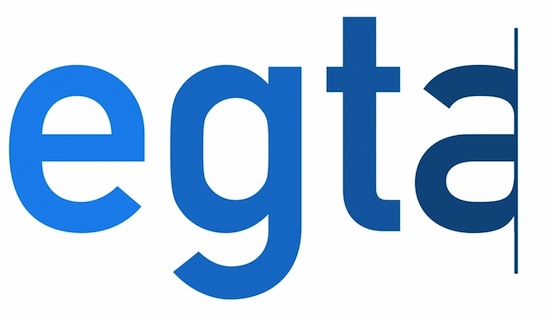In Dublin between March 25-26, egta held a conference dedicated to innovations in radio advertising – hosted by RTÉ, the Irish public broadcaster.
Radio sales houses and their partners proudly showcased innovations in commercial communications that are delivering real value to advertisers and listeners: new ways to package and sell traditional radio and online audio inventory; new platforms and ways to engage with consumers and innovations in developing non-traditional or incremental revenues, partnerships and new monetisation concepts. Willie O’Reilly, RTÉ Group Commercial Director, called on the industry to focus on the strengths of radio’s traditional broadcasting and programming and to return to their markets enthusiastic and invigorated about these core strengths.
There is no doubt that radio stands at a cross-roads between traditional media and digitisation – or as egta Secretary General Katty Roberfroid put it: “tra-digitisation”.
On the one hand radio has embraced the opportunities provided by new technology: mobile, streaming, personalisation, social media and incremental reach. On the other, despite revenue pressure and an explosion of competition for the listener’s time, radio retains its legacy strengths: mass reach, live content, strong ROI, cost efficiencies, trust, community and powerful emotional hooks with its audiences and – for advertisers – speed and flexibility.
The threats, though, are all around: the giants of the Internet age, who command an increasing share of advertising spend; car manufacturers, whose ambition to own in-car entertainment may erode one of radio’s core competitive advantages; and streaming services. Some services, such as Pandora and iTunes Radio, compete for listener time and adspend, but others, such as Spotify and Rdio, are looking to partner with radio.
Meanwhile, advertisers are faced with a media landscape of both unparalleled opportunity and complexity. They now have more ways than ever to reach their consumers, and more data about them, but tracking and measuring audience and response is difficult, expensive and time-consuming. To allocate budget to radio, Chris Nolan, Media Director EMEA for Kellogg Company, noted that radio has to give advertisers “a reason to believe”.
In platforms, Germany’s NRJ is using smart TV apps to drive cross-market penetration; Sweden’s Modern Times Group’s new mobile platform combines radio with artists’ social media streams; and the Netherlands’ Sky Radio has launched MyRadio, a platform that combines the traditional (curation and localisation) with the modern through personalisation and interaction.
Findings presented by Edison Research’s Larry Rosin demonstrated the scale and penetration of digital innovations in the United States, offering European radio a glimpse into the future landscape that they are likely to face before long, a landscape that presents many opportunities for those willing to adapt quickly to change. This was echoed by BRmedia’s Peter Fohrwikl in a concise analysis of the place of advertising in the connected car dashboard.
In sales and monetisation, innovation includes RTE’s use of programmatic trading to drive efficiencies in selling online inventory to international audiences; new forms of inventory such as tailor-made stations for brands from SBS in Scandinavia; and services like LDR Interactive’s platforms that allow stations to drive – and monetise – higher online and mobile listener engagement. IP Belgium showcased its recently introduced ad substitution technology, which offers advertisers increased targeting and represents additional value for the sales house.
Successful monetisation of audio on new and traditional platforms is underpinned by robust and accountable measurement, as highlighted by Triton Digital’s Rob Favre: the firm’s Webcast Metrics brings comparable data to online and terrestrial listening, allowing like-for-like comparisons and integrated campaign buying. Further evidence of radio’s hybrid future was illustrated by Rdio’s ongoing moves to develop partnerships for digital streaming with FM radio broadcasters.
While it is clear that the industry is well advanced in innovation, some are further down the route than others. As Aidan McCullen, Head of Digital at Irish broadcaster Communicorp noted: “Innovation isn’t the problem; executing it is.”
Innovation is as much a state of mind as it is a goal, and the media eco-system requires continuous adaptation and evolution. If it doesn’t focus on its listeners, and if it doesn’t look outside for ideas and partnerships, radio risks irrelevance. To quote Mitch Kline, co-CEO of TargetSpot: “You don’t own your listeners. They determine what radio is.”

